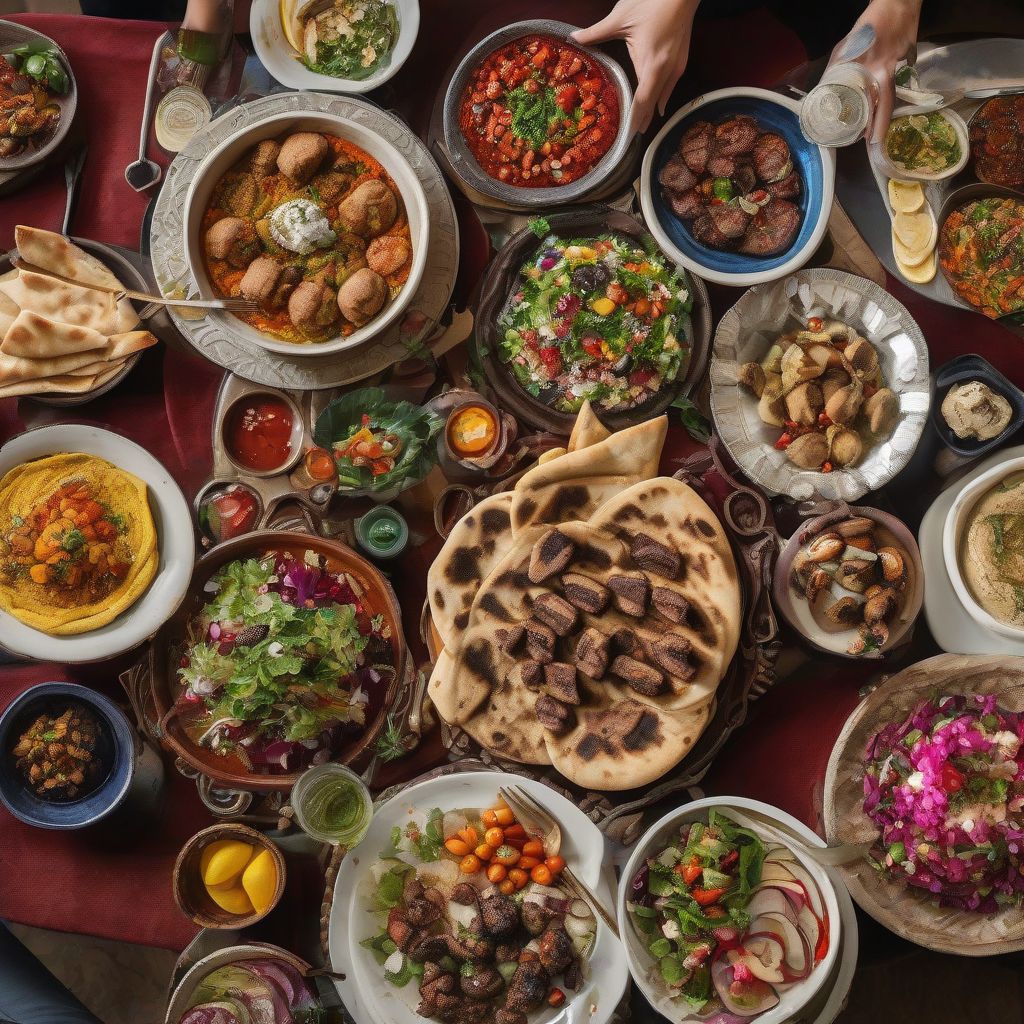Imagine tantalizing aromas filling your kitchen, transporting you to the bustling marketplaces of Morocco or the sun-drenched shores of Lebanon. That’s the magic of Middle Eastern cuisine – a vibrant tapestry of flavors, textures, and aromas built on time-honored cooking techniques.
As a nutritionist and meal-prep coach, I’ve always been captivated by the healthy and delicious potential of traditional cooking methods. And let me tell you, mastering Middle Eastern cooking techniques is like unlocking a treasure chest of culinary possibilities, empowering you to create dishes that are both nourishing and bursting with authentic flavor.
Whether you’re a complete beginner or a seasoned home cook looking to expand your repertoire, this comprehensive guide will equip you with the essential knowledge and practical tips to confidently recreate the magic of Middle Eastern cuisine in your own kitchen.
Mastering the Art of Spices: The Foundation of Flavor
At the heart of Middle Eastern cooking lies a deep appreciation for the transformative power of spices. Forget bland, one-dimensional dishes – we’re talking about building complex flavor profiles that dance on your palate.
Essential Spices for Your Middle Eastern Pantry:
- Cumin: Warm, earthy, and slightly bitter, cumin is a staple in countless Middle Eastern dishes, lending its distinctive flavor to everything from hummus to tagines.
- Coriander: A bright, citrusy counterpoint to cumin’s earthiness, coriander seeds add a refreshing complexity to spice blends and marinades.
- Turmeric: Beyond its vibrant golden hue, turmeric brings an earthy, slightly bitter flavor and a subtle warmth to dishes like rice pilafs and stews.
- Sumac: With its tangy, lemony flavor, sumac adds a vibrant acidity to marinades, dressings, and dips, often used to balance richer flavors.
- Paprika: Ranging from sweet and mild to smoky and hot, paprika adds color and depth to countless dishes, from spice rubs for grilled meats to flavorful stews.
Tips for Using Spices Like a Pro:
- Toasting: Enhance the flavor of whole spices like cumin and coriander seeds by toasting them lightly in a dry pan over medium heat until fragrant. Grind them fresh for optimal flavor.
- Blooming: Infuse your cooking oil with incredible aroma and depth by adding ground spices and heating them gently for a minute or two before adding other ingredients.
- Balancing: The key to harmonious Middle Eastern flavors lies in achieving a delicate balance between sweet, sour, savory, and spicy elements. Don’t be afraid to experiment and adjust spice levels to your liking.
Taming the Flame: Essential Cooking Techniques
Beyond the captivating world of spices, mastering traditional Middle Eastern cooking techniques involves understanding how to utilize heat to transform ingredients into culinary masterpieces.
1. Grilling: Embracing the Char
Grilling over an open flame is deeply ingrained in Middle Eastern culinary traditions, imparting a unique smoky flavor and irresistible char to meats, vegetables, and even flatbreads.
- Kebabs: From succulent lamb koftas to flavorful chicken skewers, kebabs reign supreme in Middle Eastern grilling. Marinate your choice of protein in yogurt-based marinades for tender, flavorful results.
- Vegetables: Don’t limit yourself to meat! Bell peppers, onions, tomatoes, and zucchini take on a delightful smoky sweetness when grilled to perfection.
2. Stewing: Slow-Cooked Comfort
From hearty tagines to fragrant Iranian khoreshes, stews hold a special place in Middle Eastern cuisine, showcasing the art of slow cooking to extract maximum flavor.
- Tagines: Named after the conical earthenware pot in which they are cooked, tagines are a celebration of slow-cooked perfection. Meat, poultry, or vegetables are gently simmered with aromatic spices, dried fruits, and nuts, resulting in tender, melt-in-your-mouth flavors.
- Khoreshes: These Persian stews often feature meat, legumes, and vegetables simmered in rich, flavorful sauces thickened with ground nuts or dried fruits.
3. Baking: From Flatbreads to Delights
Baking plays a crucial role in Middle Eastern cuisine, from the ubiquitous flatbreads that accompany every meal to delectable pastries and desserts.
- Flatbreads: No Middle Eastern meal is complete without freshly baked flatbreads like pita, lavash, or naan. These versatile breads are perfect for scooping up dips, wrapping around falafels, or serving alongside grilled meats.
- Pastries: Indulge your sweet tooth with baklava, knafeh, or other delectable pastries that showcase the artistry of Middle Eastern baking.
 A spread of colorful Middle Eastern dishes
A spread of colorful Middle Eastern dishes
Elevating Your Culinary Game: Expert Tips and Tricks
Ready to take your Middle Eastern cooking to the next level? Here are some insider tips and tricks to impress your taste buds and wow your family and friends:
- Embrace Fresh Herbs: Fresh herbs like parsley, mint, cilantro, and dill are essential components of countless Middle Eastern dishes, adding vibrancy, freshness, and aroma.
- Master the Art of Rice: From fragrant basmati rice to fluffy couscous, grains play a central role in Middle Eastern cuisine. Learn the proper techniques for cooking each type of grain to fluffy perfection.
- Don’t Fear the Fat: High-quality fats like olive oil and ghee are essential for flavor and texture in Middle Eastern cooking. Don’t be afraid to use them generously.
Conclusion: Embark on Your Culinary Adventure
Mastering traditional Middle Eastern cooking techniques is a journey that will reward you with a lifetime of culinary adventures. By embracing the bold flavors, aromatic spices, and time-honored techniques, you’ll unlock a world of delicious possibilities in your kitchen. So gather your ingredients, fire up the grill, and embark on your culinary exploration of the vibrant and flavorful world of Middle Eastern cuisine.
Have you tried any of these techniques before? Share your experiences and favorite Middle Eastern dishes in the comments below!
[amazon bestseller=”middle eastern cookbook”]
